The already strained US-Pakistan relations appear to have gone into almost a freefall after NATO gunships fired on two Pakistan army posts along the Pak-Afghan border in the Mohmand Tribal agency killing 24 soldiers and injuring around a dozen more, ironically enough three years to the day of the 26/11 terror attacks in Mumbai. While this is not the first instance of NATO/ISAF forces hitting Pakistan army targets, both the scale of casualties as well as the timing of the attack (coming as it does on the back of the Raymond Davis affair, the Osama bin Laden operation by US Navy SEALS, and the tension caused by the accusations hurled by former US Chairman Joint Chiefs of Staff Admiral Mike Mullen who called the infamous Haqqani terror network a ‘veritable arm of the ISI’) have resulted in pushing the US-Pakistan relations to virtual breakpoint, and that too at a time when diplomatic and political manoeuvres on the endgame in the Afghanistan were gathering pace.
A visibly outraged Pakistan has reacted to the Mohmand attack by using almost all its leverages in one go. They have shut off the NATO logistics lines that run through Pakistan. The Americans have been asked to vacate the Shamsi airbase in Balochistan, from where US drones were launched. Intelligence cooperation has reportedly been suspended and all meetings and visits of civilian and military officials of the two countries have been cancelled. The Pakistan government has decided to ‘revisit’ its cooperation in the War on Terror. It has also decided to boycott the Bonn conference which was being convened to decide the future of Afghanistan. Upping the ante further, Pakistan's army chief has given his troops complete freedom to retaliate ‘with full force’ to any future ‘aggression’. Alongside, public sentiment, already overflowing with anti-Americanism, has been whipped up to such an extent that very little wriggle room is left for the Pakistanis to settle matters through compromise and diplomacy.
For now, the NATO/ISAF countries have responded to these steps with a degree of equanimity. While efforts have been made assuage the Pakistanis with expressions of ‘regret’ and ‘sorrow’ over the deaths of soldiers, and assurances have been given of conducting a thorough investigation into the incident, so far no ‘apology’ has been forthcoming. Nor is there any move to concede on some of the other demands being made by the Pakistanis – namely, punishing the people responsible for the attack, compensation for the dead and injured, a written agreement laying down the terms and conditions on which anti-terror cooperation between Pakistan and US will take place in future with guarantees that Mohmand-type incidents will not be repeated. Clearly, Pakistan is putting up a show of national indignation to try to milk the situation to the maximum extent possible. This means that apart from the demands made publicly, the Pakistanis will also try and extract more economic and military assistance and make a major push for getting its way in the Afghan endgame. But in going for the kill, there is a good chance that Pakistan might end up killing the golden goose and could well have to face political, military and economic consequences that it would find extremely difficult to handle.
A lot will of course depend on whether or not the US and NATO call Pakistan's bluff. There are enough indications that US military’s patience and tolerance has been running very low with Pakistan’s shenanigans in Afghanistan and an incident like Mohmand was waiting to happen. For some months now, the ISAF commanders and Afghan officials have been complaining about cross-border firing into Afghanistan by Pakistani troops. Some days back, a senior US army official went on record to say that Pakistani forces were giving covering fire to Afghan Taliban and were targeting ISAF positions through mortar and rocket fire. There have also been a few instances of cross border artillery shelling. Such tactics have consistently been deployed by the Pakistan army against India in Jammu and Kashmir, both to push in terrorists and to give terrorists covering fire when they are exfiltrating. It is therefore entirely possible that similar tactics were being replicated on the Afghan border, provoking the NATO and Afghan forces to a point where they finally decided to hit back.
Of course, as things stand, the ISAF commanders are maintaining that the attack was neither deliberate nor intentional. According to them, the incident was an example of how things can go horribly wrong in the fog of war. Top US army officers claim that it was an accident that occurred due to either a miscommunication or a genuine mistake at both the field and command centre level after NATO and Afghan forces drew fire from the Pakistani side. Pakistani officials are, however, quite definite that the attack was a deliberate act of aggression. The sequence of events as narrated by them tends to lend credence to the conclusion drawn by the Pakistan army. After all, if it was a mistake, then the attack would not have been carried out over two hours in spite of the Pakistanis frantically telling the Americans that it was their posts that were coming under fire.
While the Pakistanis are convinced that the bombing was deliberate, the whys and wherefores of the action by US forces is what they are not quite sure about. Was it just a test action to see how far the Pakistanis can be pushed? Was it a signal that the gloves are coming off and the Americans are all set to extend the war into Pakistan to hit at Taliban safe havens inside Pakistan? Or was it only a one-off incident that resulted from local commanders losing their heads and taking extreme action? Equally, if not more, important, is the question as to how far the Pakistanis are willing to go in confronting the Americans and whether or not they have worked out all the repercussions of the collision course on which they have embarked against the Americans and their NATO allies.
After the Mohmand incident, both the US and Pakistan are now on an escalation ladder. With Pakistan having more or less thrown in one go almost all the aces they held up their sleeve, it remains to be seen what happens next. For now, the US is playing cool and not showing any undue worries over the closure of the supply lines and other steps taken by Pakistan. Perhaps, the US is calculating that the Pakistanis will start climbing down after a few days. Since the ISAF is fairly well stocked for the winter – some reports say that they have six months of supplies – there is no real urgency yet to reopen the supply routes. But if the supply lines stayed blocked for a couple of months more, the Americans will have to work out not only their alternative supply lines but also the counter retaliatory measures against the Pakistanis.
The Pakistanis are banking on the enormous rise in costs that any other supply route will entail for the ISAF. Given the deteriorating economic situation in US and Europe, this additional economic strain of using either the Northern Distribution Network (NDN) or forming an air bridge to supply the troops in Afghanistan seems neither viable nor sustainable. What is more, the Pakistanis are expecting that the Russians could play hard ball on the NDN, leaving the Americans with no choice but to grovel before the Pakistanis to reopen the supply lines. At this point, the Pakistanis think they will be in a position able to squeeze the Americans for every last cent and get their way on a range of issues – from Afghanistan to Kashmir and from nuclear deal to economic assistance. To be sure, it is not as if the Pakistanis expect the Americans to sit back and do nothing. But they feel confident that the Americans are in no position to enter into a military confrontation with them. And any diplomatic pressure that the Americans and Europeans put on them can be handled with the support of their all weather friend, China.
As usual, Pakistan’s assumptions are really more in the nature of delusions and are predicated, more than anything else, on wishful thinking. While it is true that the ground situation is not very good for the ISAF troops, it is equally true that the Pakistanis are punching much above their weight. As the Pakistanis see it, while they can inflict unbearable pain on the Americans who are caught in a ‘bear trap’ in Afghanistan, they don’t expect anything more than a stoppage of all military and economic aid from the US, something they feel they can live without if push comes to shove.
But clearly, the Pakistanis are misreading the situation. While Pakistan managed to live without US aid in the past (post 1965 and then in the 1990’s), today’s Pakistan is far weaker economically, far more isolated diplomatically, and far more fractious politically than any time in the past. Perhaps, if US retaliation was limited to only cutting off military and economic aid, Pakistan might still be able to pull through. But what if the US not only cuts aid, but also uses its influence to make its other allies cut aid to Pakistan, restrict Pakistan's trade, obstructs all multilateral funding to Pakistan, imposes sanctions on Pakistan, moves the UN to force compliance on Pakistan and if necessary resorts to an aerial and naval blockade of Pakistan. Politically, the US can start to exploit the troubles in Pakistan’s soft underbelly – Balochistan – to create enormous problems for Pakistan. And these are only the options that can be exercised short of exercising the military option, which too can be used if the situation becomes desperate.
While a range of options are available to the US, it doesn't seem as though the Americans are ready to exercise any of these hard options. Chances therefore are that they will try and sweet talk the Pakistanis to start climbing down. But this will only bring temporary relief. If the Americans are looking for a more durable solution, then they will have to wield the big stick on Pakistan and the sooner the better.
-----------------------------------------------
Published Date : 09th December 2011

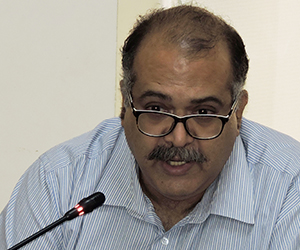
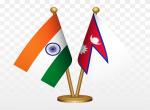
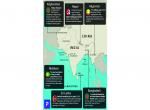
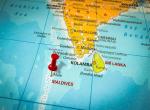


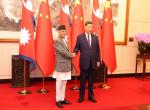
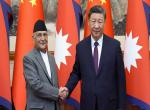
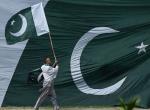
Post new comment